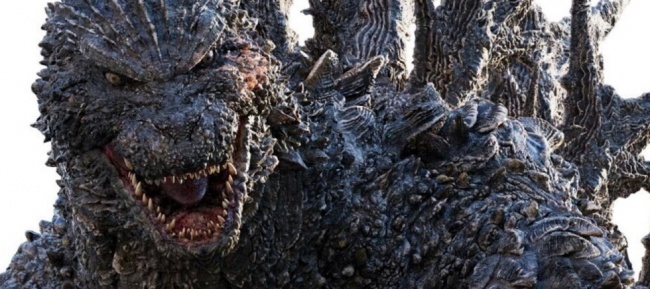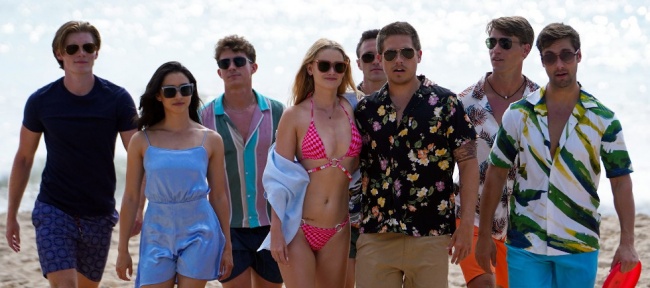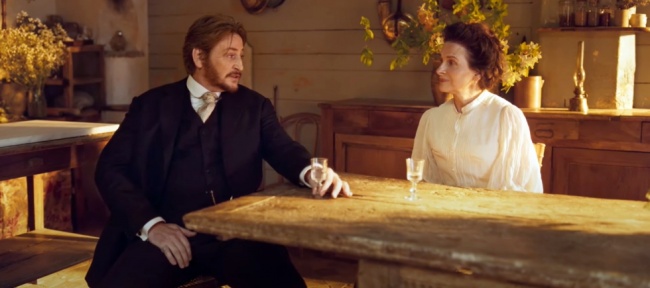It’s been almost 70 years since Godzilla first appeared in the iconic series “Godzilla. Japan under the terror of the monster, by Ishir Honda, where we see a giant lizard/dinosaur destroying the country of Japan, as an allegory of the nuclear attack it received from the United States. From 1954 to the present, the world’s most famous kaiju has seen multiple redesigns, tons of merchandising, and even the occasional foray into Hollywood. “Godzilla Minus One” It is the start of the franchise’s seventieth anniversary celebrations, which will take place in 2024, and it is a real gift, both for fans of the character and for those of us who like blockbusters (which were seen in the series ). dust for several years). .
Takashi Yamazaki has decided to look back at the time he wrote and directed this film. I can’t say I’ve seen all the films in the Radioactive Lizard Kaiju universe (I’m working on it), but I have seen a few, and this time they’ve focused heavily on creating a title more similar to their first ones both films as the (good) pointless spectacle of ridiculousness that it ultimately became. Neither mecha versions of the creatures, nor monsters from outer space, nor Godzilla doing a double flying kick. It’s a serious, solemn film in which the symbology of Godzilla is even more clearly expressed than in the original film.
The plot takes place shortly after World War II, when Japan is in the midst of reconstruction, and stars Koichi, a failed kamikaze pilot who is afraid of death, as the protagonist. This presents us with a panorama full of dramatic feelings of guilt and fear, coupled with the search for a spark of hope to look into the future. In general, in “monster movies” it is usually the human part that is the weakest and causes the most laziness from the start, because what both the studio and the viewer want to exploit/see is the destructive power of the monster. . It’s well done here and I’d even say it would work fantastically with more development time, making what happens to the characters matter a bit more to the viewer, especially in a somewhat rushed ending.
All characters have their special connection to the Second World War. It has affected everyone in a devastating way. The film develops them through trauma, and then Koichi becomes someone interesting because he has a hard time moving forward and looking to the future. It’s a hero’s journey with several bumps along the way, with an atypical hero in this type of production because he feels so human. It’s not that psychologically complex, but is reminiscent of Shinji from Neon Genesis Evangelion because of the hatred he feels towards himself and because he feels unable to do anything. Ryunosuke Kamiki does a good acting job and gives the character the lack of hope and humanity that is expressed in the script.
If you already know all the characters and are immersed in the film’s drama, you’ll hear the first bars of the character’s impressive signature theme (originally composed by Akira Ifukube) and sit back in your seat because you already know what’s coming: None Lesser than Godzilla, in a new version. A new, quite conservative design that looks like the descendants of the versions from the 90s and 2000s. If in “Shin Godzilla” Break away from all the designs you’ve seen so far and go for something more classic. In keeping with the homage to the franchise it represents, but without some details (the way the atomic breath is charged), it will not be one of the most memorable versions.
Apart from the design, it has to be said that the special effects recreation is fabulous, especially considering that the budget was 15 million dollars, not a tenth of what it cost. ‘Black Panther’, which we all already know what its (d)special effects look like. The scenes of destruction are made even more significant by the context of reconstruction that Japan finds itself in, so every destroyed building, every destroyed business has some relevance. When we see a society in search of a new identity suffering such an attack, it becomes easier for us to develop compassion. Every atomic breath, step or roar deserves to be enjoyed on the big screen. Here you can see Takashi Yamazaki’s experience as a special effects director. Particularly noteworthy is the last act, with a spectacular setting that is very easy to get involved in thanks to the previous work on the construction of the characters and their conflicts. Also worth mentioning is the OST by Naoki Sato, which contributes a lot to the action scenes beyond the main mythical theme.
The flaws that I can identify are essentially two: a few somewhat cowardly and unnecessary script decisions and an over-explanation that at some point borders on absurdity. In any case, despite these problems, the end result is very solid, so we won’t consider it too much. Godzilla roars again on the Japanese land after seven years of sleep and the way he does it. The sequel is practically confirmed after its commercial success, so it seems that we are facing the birth of a new phase for the character. Happy anniversary, Godzilla (in advance) and many more to come.
By Marc Sacristan García
@TheLebowskiMan













